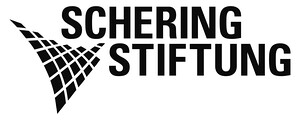TEMPERATE – under your skin, nano carriers through the web of life
May 20–September 19, 2021
Unter den Linden 32-34
10117 Berlin
Germany
T +49 30 20622965
F +49 30 20622961
info@scheringstiftung.de
“Heat in physics—not the tempest on stage for centuries—
is the only law that divides the past from the future. And
we are not only talking about the climate but about the
care-riers: our bodies and the planet. Carriers of the
elemental and the particles.
The skin is our interface, an interface that measures: We
connect with energy and other beings as well as
non-beings and what has been or might be coming through
temperature and sensibilities interfaced through the skin as
information transfer.
We react with heat to violence and injustice when there
are intrusions to the body and to Gaia, mutations and cell
deformations. The physis of anything—entangled assemblages,
sculpture, data stacks, compost—is formed like a tissue
in the matrix of multicellular connections.
Nodes, skin, in transition, in transformation
solid/liquid/haze/heat—”
—Susanne M. Winterling
In an exhibition room heated to body temperature, visitors encounter a glowing microorganism that carries a backpack filled with drugs. Like in a video game, it makes its way through human tissue. This fluorescent bacterium is the protagonist of Susanne M. Winterling’s installation TEMPERATE, in which she creates a visual system that reimagines the relationship between man and microorganism.
Inspired by biomedical research, the artist has designed an experiential space where visitors discover themselves to be about the same size as bacteria. Magnified many times over, a microorganism normally not recognizable to the naked eye travels across two projection screens. Inspired by scientific imaging procedures, Winterling presents a non-anthropocentric view of microorganisms and thus raises awareness for the complex, fruitful, and productive relationship that exists between the life forms.
The protagonist of this exhibition comes from the lab of nano-engineer Simone Schürle, head of the Responsive Biomedical Systems Lab at ETH Zurich. In her pathbreaking research, Schürle develops bioluminescent bacteria that, as nanocarriers, enable a targeted delivery of drugs to affected body regions. Their size is one thousandth of the thickness of a human hair. Bioluminescence is an important tool for Schürle’s work: It is used as a marker to analyze and guide the movements of nanocarriers.
Since 2013, Winterling too has dealt with bioluminescent microorganisms in numerous works, including her striking installation Planetary Loop of Gravitation (2018). Based on her intensive work with these life forms, she founded the artistic-scientific network Planetary sensing: navigations below the surface. Experts from disciplines such as philosophy, marine biology, microbiology, astrophysics, and the social sciences jointly and in cooperation with residents of Oyster Bay, Jamaica, study the marine dinoflagellates living in that region. These single-cell organisms, which light up when moving or being touched, not only play a central role in the indigenous myths of Jamaican culture; they also provide important information about marine conditions and pollution levels.
TEMPERATE – under your skin, nanocarriers directed through the web of life was developed in cooperation with Simone Schürle and her team at the Responsive Biomedical Systems Lab of the ETH Zurich, especially Daphne Asgeirsson, Tinotenda Gwisai, Simone Hersberger, Nima Mirkhani, Thuy Trinh Nguyen, Anna Scheeder, and Thomas Valentin. The artist would also like to thank Bjørnar Sporsheim and the Department of Clinical and Molecular Medicine, Cellular & Molecular Imaging Core Facility at the Norwegian University of Science and Technology (NTNU).
The exhibition was realised in cooperation with ETH Zurich.


